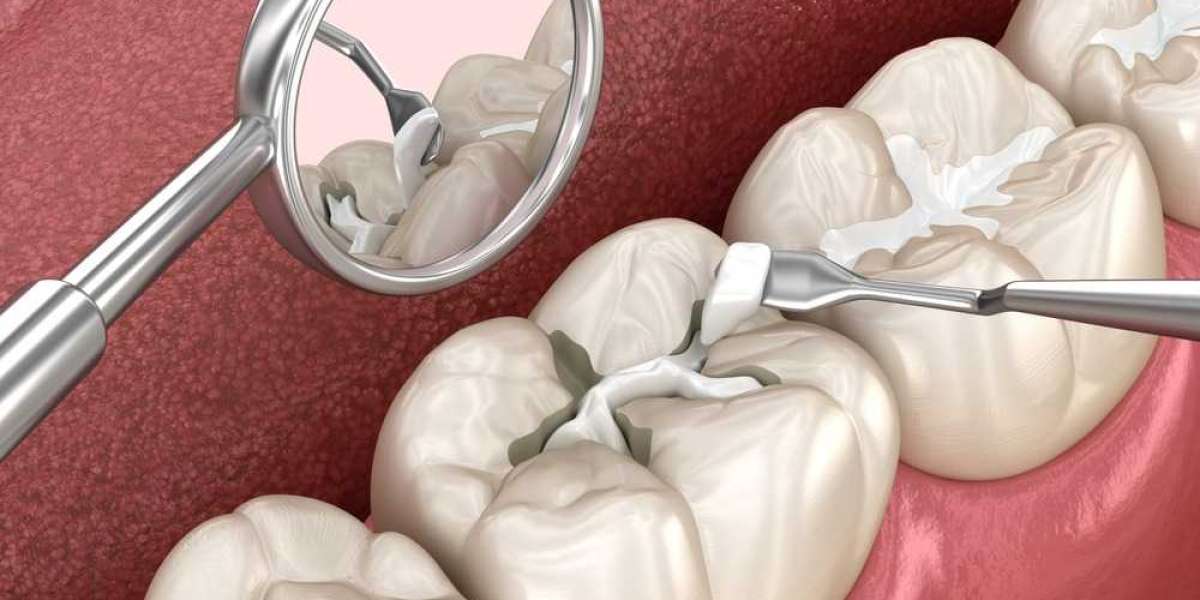Fillings vs. crowns is a common debate when it comes to dental treatments. Both are used to restore damaged or decayed teeth, but they serve different purposes and are applied in different situations. Understanding the difference between Dental Tooth Filling and crowns can help you make informed decisions about your dental care. This article explores how each option works, their benefits, and when to choose one over the other.
What Are Fillings and When Are They Used?
Fillings are designed to restore the structure of a tooth that has been affected by decay or damage. They are typically used when the damage is minimal, such as a small cavity.
Here’s when fillings are the best option:
Small to medium cavities – Fillings are ideal for teeth that have minor decay or damage
Prevent further decay – Fillings help to seal the tooth, preventing bacteria from getting in and causing further damage
Cost-effective solution – Fillings are generally less expensive than crowns and can be completed in one visit
Variety of materials – Fillings come in several materials, including amalgam (metal), composite (tooth-colored), and porcelain
Fillings are most effective when the damage to the tooth is not extensive and the tooth structure is still largely intact.
What Are Crowns and When Are They Used?
Crowns, also known as caps, are used to cover and restore a tooth that is extensively damaged or weakened. Unlike fillings, which only address cavities or small damage, crowns are designed to cover the entire tooth.
Here’s when crowns are the best option:
Severe tooth damage – Crowns are used for teeth that have extensive decay or have cracked or broken
Large fillings – When a filling won’t be enough to restore the tooth’s strength, a crown may be needed
Root canal therapy – If you’ve had a root canal, a crown is often used to restore the tooth’s appearance and function
Aesthetic concerns – Crowns are often used on front teeth to restore appearance when fillings can’t achieve the desired look
Crowns are best for restoring teeth that have lost much of their original structure, providing a strong, protective covering.
Key Differences Between Fillings and Crowns:
Understanding the main differences between fillings and crowns will help you determine which option is right for you.
Here’s a comparison:
Coverage: Fillings only restore part of a tooth, while crowns cover the entire tooth
Procedure: Fillings are a relatively quick and straightforward procedure, while crowns require more preparation and multiple visits
Durability: Crowns are generally more durable than fillings, making them suitable for teeth that undergo heavy chewing pressure
Aesthetics: Fillings can blend seamlessly with your natural teeth, especially composite fillings, whereas crowns, while aesthetically pleasing, may stand out more than a filling
Your dentist will recommend the best option based on the extent of the damage and the location of the affected tooth.
Benefits and Drawbacks of Fillings:
Fillings are a popular choice for minor dental issues due to their affordability and ease of application. However, they come with some limitations.
Here are the benefits and drawbacks of fillings:
Benefits:
Quick and simple procedure – Most fillings can be done in a single visit
Variety of materials – Choose from a range of materials that suit your aesthetic and budget needs
Preserves tooth structure – Minimal removal of tooth material is needed
Drawbacks:
Not suitable for large damage – Fillings can’t support extensive tooth damage
May wear down over time – Fillings, particularly amalgam, can wear out or break over time
Can cause sensitivity – Some people may experience sensitivity after a filling is placed
Fillings are an excellent choice for cavities and small cracks, but they may not provide long-term support for more damaged teeth.
Benefits and Drawbacks of Crowns:
Crowns are a more extensive treatment option, but they provide additional support and protection for severely damaged Dental Tooth Filling Treatment.
Here are the benefits and drawbacks of crowns:
Benefits:
Durable and long-lasting – Crowns can last many years, especially if properly cared for
Comprehensive protection – Crowns cover the entire tooth, offering full protection against further damage
Suitable for large damage – Ideal for teeth that are severely decayed, cracked, or have undergone root canal therapy
Drawbacks:
Longer procedure – Getting a crown typically requires two visits: one for preparation and one for placement
More expensive – Crowns are generally more costly than fillings
Tooth reduction required – Some tooth structure must be removed to place the crown
Crowns are ideal for extensive damage, providing a more durable, long-term solution compared to fillings.
Conclusion:
The decision between fillings vs. crowns depends on the extent of the damage to your teeth. Fillings are suitable for minor cavities and damage, while crowns are used for more severe issues that require full coverage and protection. Your dentist will assess your specific needs, considering factors like the size of the cavity, the tooth’s location, and your overall oral health to recommend the best option for you.
Both fillings and crowns play an important role in dental care, and understanding their differences can help you maintain a healthy, functional, and aesthetically pleasing smile.











